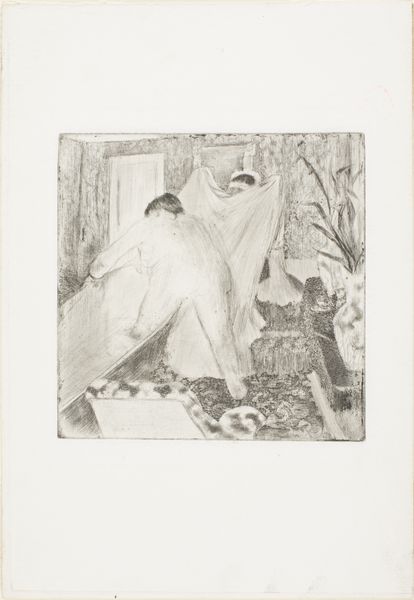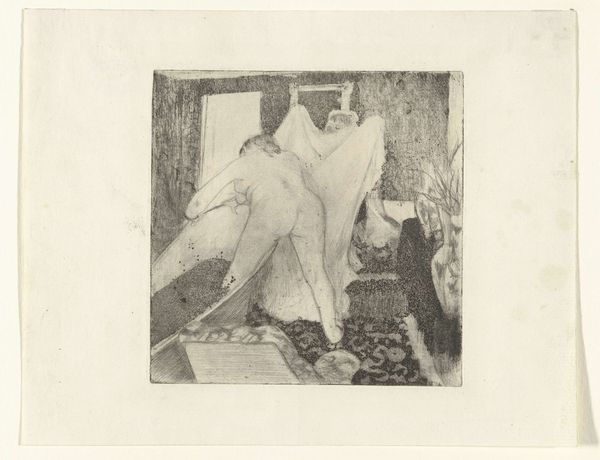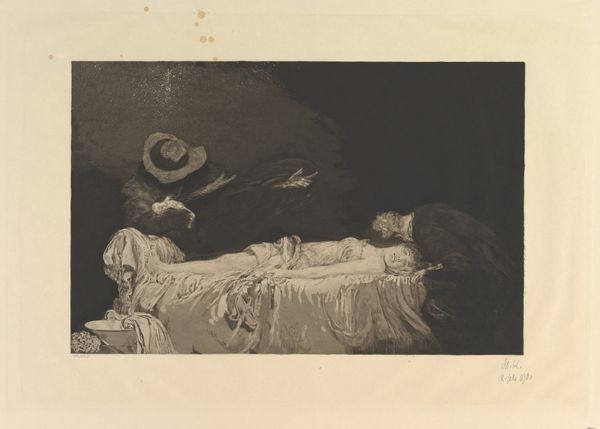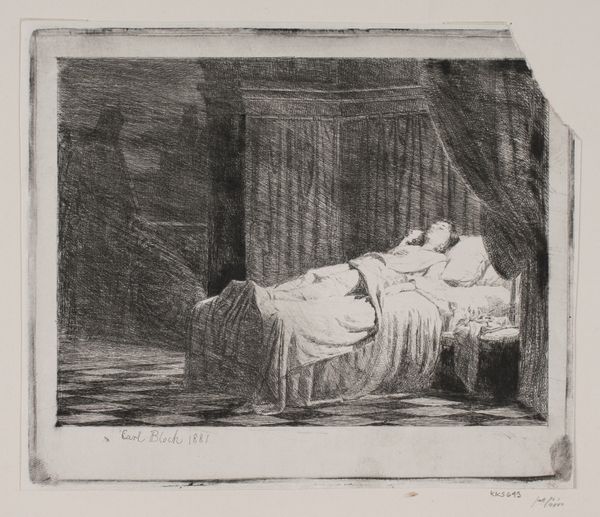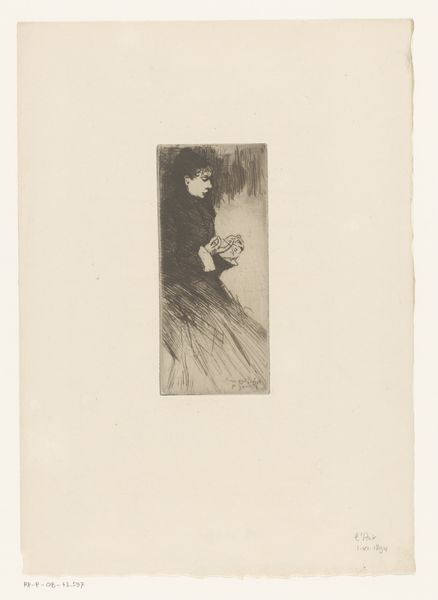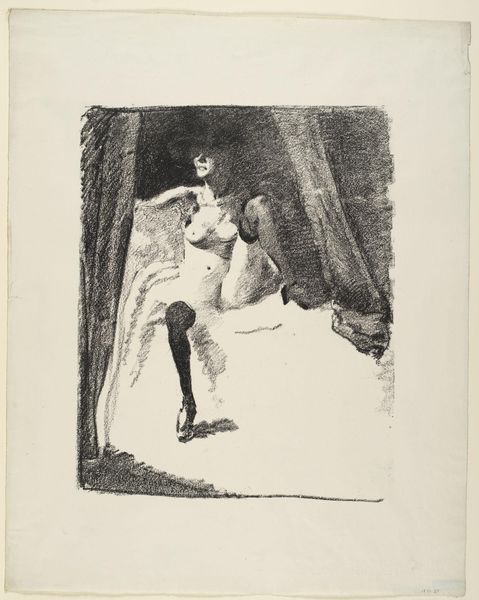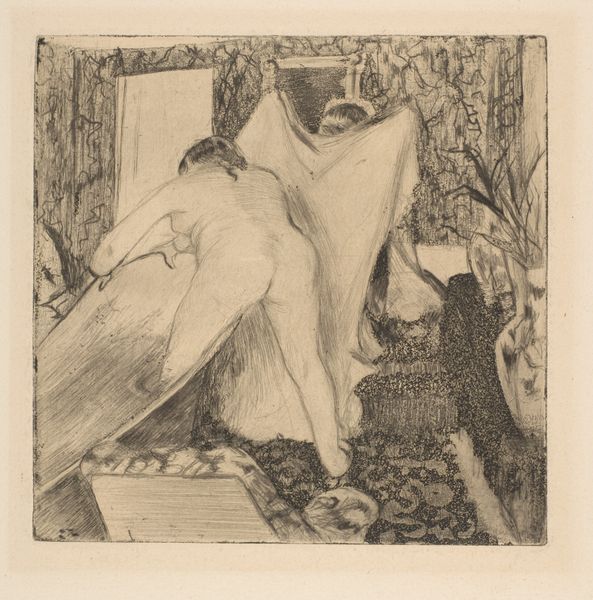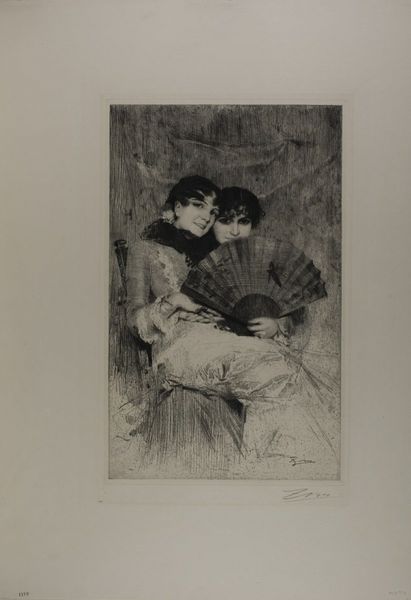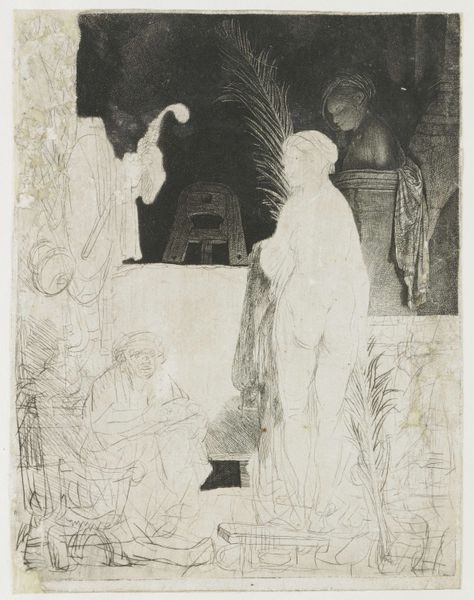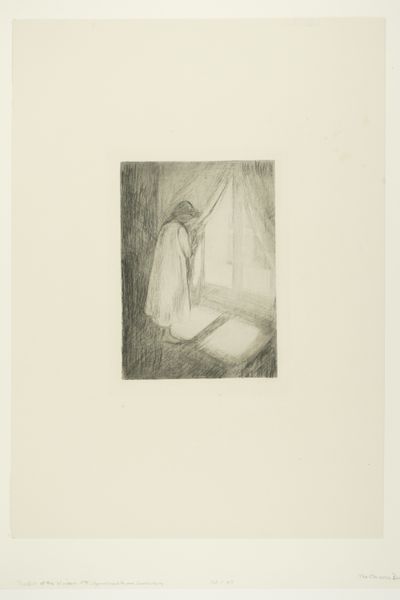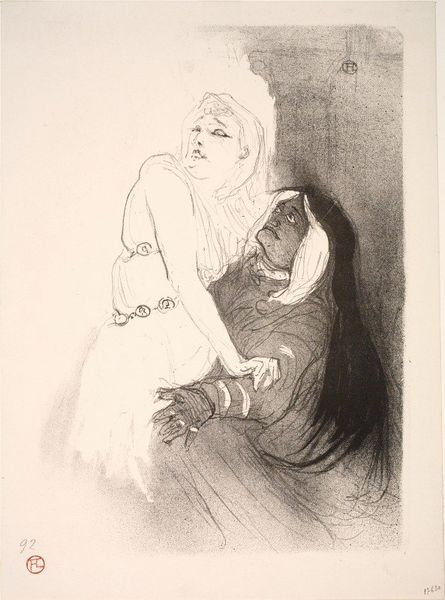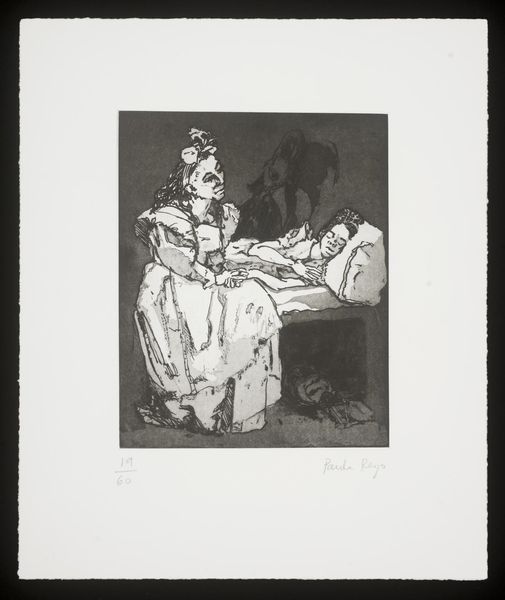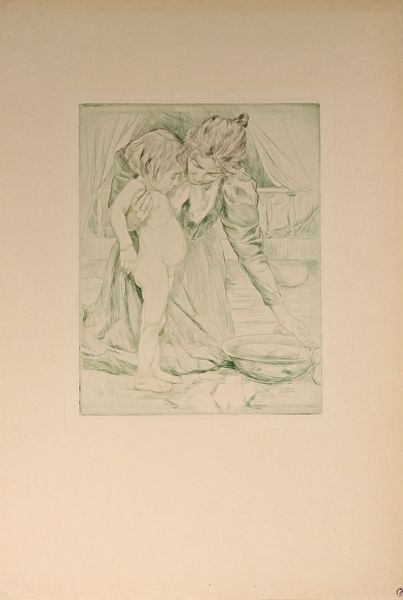
Dimensions: plate: 31.9 × 44.2 cm (12 9/16 × 17 3/8 in.) sheet: 39.7 × 52.8 cm (15 5/8 × 20 13/16 in.)
Copyright: National Gallery of Art: CC0 1.0
Curator: Welcome. We’re looking at "Requiem," a work on paper made with pencil and charcoal, dating from 1884 to 1950, by Hans Wildermann. Editor: It strikes me as mournful, gothic even. The limited palette emphasizes the starkness, that desolate landscape in the background… it feels undeniably heavy. Curator: Symbolism certainly plays a key role. It evokes fin-de-siècle anxieties and spiritual quests. Look how Wildermann uses light and shadow to represent states of being—the ethereal figures contrasted against dark, undefined spaces. I wonder what socio-political forces influenced Wildermann to evoke such darkness? Editor: Well, beyond the themes, the visible texture speaks volumes. Notice the way Wildermann uses charcoal— almost sculptural in its application—and consider its relative accessibility and cheapness as material. It emphasizes a labor-intensive practice but simultaneously is easily and widely accessible as it's literally burned matter—wood becomes art and its meaning is quite tied to its materiality and widespread availability to artists in Wildermann's social context. Curator: And consider its display context: a print allows for wider distribution. Was Wildermann seeking to democratize access to art exploring grief or spiritual questioning? Were such explorations encouraged by arts institutions of that time, or were they considered radical expressions to be controlled or dismissed? Editor: The means of production informs that distribution, of course. Mass production suggests art not only for the wealthy but perhaps for a rising middle class grappling with their own mortality in rapidly changing times. This makes one wonder how the meaning of Requiem shifted depending on its intended recipient. Curator: A valid point, the question of intended audience always changes the potential meanings imbued within an artwork. Its accessibility does allow for varied perspectives, as well, across a range of classes. How interesting, and somewhat sad! Editor: Absolutely, seeing the means of its making really underscores that complex exchange between artist, material, and society and this somber theme truly lingers.
Comments
No comments
Be the first to comment and join the conversation on the ultimate creative platform.
